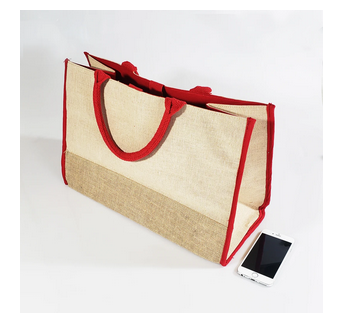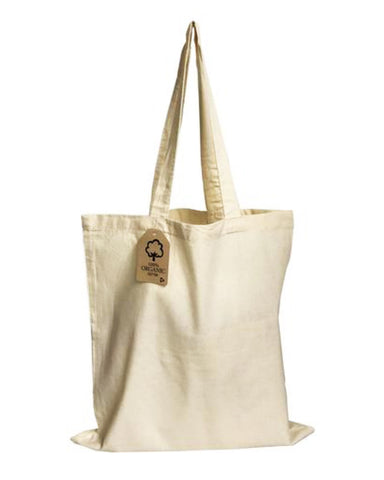
It is not news that the fashion industry is among the top environmental threats of our world, together with agriculture and other sectors. Nevertheless, in the last years, concepts like ethical fashion and sustainable fabrics emerged. While some companies talked the talk, others also walked the walk and continued to do so. Ever since people realized our planet is in danger from pollution, they also embraced more environmentally friendly solutions to wearing clothes and accessories. What role does recycled cotton play in the transformation of the fashion industry? Let's find out today!
Recycled Cotton: What Is It?
Recycled cotton made the topic of our discussions before, but today we will take a closer look at its opportunities and limitations for ethical fashion's future.

Post-industrial cotton – as we called it in a similar discussion – represents cotton scraps and fibers discarded by various sources. In the context of recycled cotton opportunities and limitations, it is crucial to understand where this salvaged cotton comes from and where it goes next. Traditionally, when the fashion industry refers to recycled cotton, it talks about two key sources:
- Post-industrial or Pre-consumer: In the process of cutting and making clothing, home textiles, upholstery, and other fashion accessories – including tote bags, purses, even shoes, headwear, etc. – the fashion industry discards remains of yarns and fabrics;
- Post-consumption: it includes fibers and scraps resulting from used clothes, used household items, upholstery, towels, bedding, and more. The fashion industry collects such leftovers and reuses them in the development of a new cotton product.
The vast quantity of recycled cotton comes from pre-consumption cotton waste. Unfortunately, the collection and recycling of post-consumption cotton fibers are complicated. Research shows that about only 1 % of the total clothing manufactured worldwide re-enters the manufacturing process to turn into new yarns for the clothing and accessory industry.

When it comes to post-consumption recycled cotton, the industry meets some of the following challenges:
- Difficulties in the classification and sorting of the scraps and fibers due to their diverse coloring, mixing with other fabrics, the elimination of other fabric contaminants, etc.;
- A lack of general willingness from the population to recycle clothes and textiles in general. Most of our used cotton/fabric items end up in landfills. We have few, if any, policies and methodologies to separate clothes' materials from other waste and send the said textiles to competent fabric recycling plants.
- We have to admit also to a global lack of environmental education when it comes to collecting, sorting, and recycling clothes, accessories, and all other fabric items we do not use. According to experts, the annual textile waste is about 25 billion pounds.
How Does the Fashion Industry Stand on Sustainability These Days?

Nevertheless, the fashion industry takes essential steps forward in turning the page and embrace the latest sustainability trends that are visible across other sectors.
We may not have yet reached the point where all of us wear sustainable textiles and walk the runways all dressed up in hemp or jute dresses and pineapple leather shoes, but progress is noticeable. The world did advance towards a less polluted planet paradigm by reusing and repurposing clothes and accessories. Moreover, one of the first steps towards sustainability is our willingness to wear organic cotton clothes, tote bags and accessories, recycled cotton shopping bags, Fairtrade cotton, BCI cotton, wool, and more.
We still need the technologies and industries to make the manufacturing of sustainable vegan fabrics into clothes, accessories, household items, etc. into an available, safe, economically sustainable, and affordable process. On the other hand, recyclable cotton is in our grasp.
Opportunities and Limitations of Recycled Cotton as Opposed to Organic, Virgin, or BCI Cotton

As you could see from above, recycled cotton comes with its fair share of advantages and limitations. It is not time to see them!
Recycled Cotton Pros
- Recycled cotton can play a vital role for the entire supply chain of textile manufacturing as it reduces the wastes and dangers associated with the cultivation, harvesting, and manufacturing of virgin cotton: less water consumption, less use of herbicides, pesticides, and fertilizers, reductions in CO2 emissions, and evidently, less landfill waste.
- Since recycled cotton comes primarily from pre-consumer waste that already went through a coloring process, it requires less energy, water, and dyeing.
- It has plenty of uses in other industries and fields, besides fashion: insulation, stuffing, production of household items, the automotive sector, mop heads, cleaning rags, padding, and more.
- It could divert billions of products from what is now their inevitable destination: landfills.
Recycled Cotton Cons
- One of the crucial limitations of recycled cotton lies within its manufacturing process. During recycling, the salvaged cotton fibers and scraps weaken. Therefore, the amount of recycled cotton in an item will eventually harm the product's yarn and fabric properties such as strength, length, strength, uniformity, texture, and evenness, among others.
- For this reason, most recycled cotton products contain other materials because manufacturers have to blend multiple types of fibers to ensure a product's quality, durability, aesthetics, and strength.
- Recycled cotton items are next to impossible to recycle again, so the chances are they will end up in landfills as well.
- The collection, processing, and shipping of recycled cotton products are still costly in terms of money, energy, CO2 emissions, the use of fossil fuels, etc. In other words, the recycled cotton life cycle could neutralize the savings it tries to make in the first place.
Bottom Line
Given the challenges of production, shipping, and selling of recycled cotton, the product price may be higher. At the same time, the quality is lower in comparison to the virgin, BCI, or organic cotton. Consumers do not yet show openness towards buying pricey items made of recycled cotton that fares worse in quality and durability than regular cotton. While the fashion industry tries to find solutions to this problem, the economic, pragmatic, and environmental issues remain.
Until technology finds us ways to use recycled cotton to make more than 50% of all fibers in a textile product, we need to have patience. What we could do is support the industry by buying recycled cotton items, reuse and repurpose them, and make sure that our old clothes and towels do not reach the landfills, but specialized plants that can do their part in protecting the environment.

